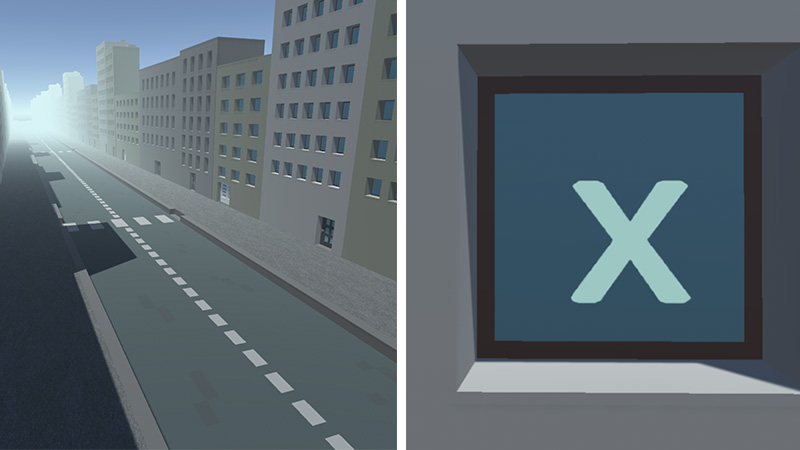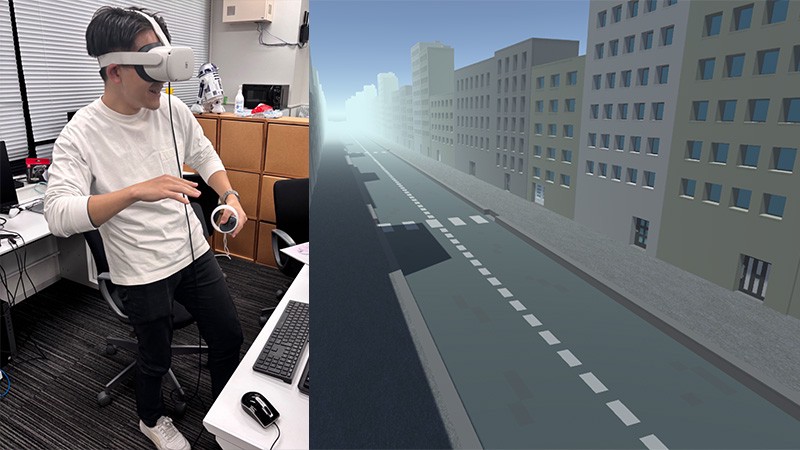With the widespread adoption of Virtual Reality (VR) technology, VR sickness has become a significant issue. VR sickness is thought to occur due to inconsistencies between real-world sensations and those provided in VR environments. Various interfaces have been proposed to alleviate this problem, including omnidirectional treadmills and movement methods using nodding actions (Nodding Acceleration). These approaches, however, face challenges regarding installation space and empirical validation of their effectiveness.
In this study, we proposed a system that provides a more natural, full-body experience using rhythmic head movements for walking input in VR. We implemented a system where users walk by moving their heads rhythmically to music and conducted a preliminary user study. The results indicated individual differences in how participants performed rhythmic movements, reports of fatigue and pain, and a tendency for some participants to ignore the music depending on task design. Subjective evaluations also indicated increased VR sickness in some participants, suggesting the need for further improvements to accommodate individual differences and refine task design.
Proposed Method
This system reduces inconsistencies between audiovisual information and bodily sensations by encouraging users to actively generate and perceive internal body movement, thereby providing a more natural walking experience. Users move through VR space by swinging their heads rhythmically to music, with walking direction controlled by the left-hand controller’s stick. Each head movement produces a step forward or backward, and walking sounds enhance realism.
The head movement detection algorithm is straightforward: it detects a head nod when vertical head movement exceeds a certain speed and transitions from upward to downward motion. The algorithm enables walking with slight vertical movements, reducing neck fatigue while accommodating various rhythmic movement styles. By combining controller input, the system distinguishes between head movements for walking and those for viewpoint adjustment, preventing unintended walking actions.
Experiment
In our preliminary study, we compared the proposed system with conventional stick-based movement. Both conditions used Sakanaction’s “Aruku Around” (BPM 132) as background music to encourage head movement. The experimental setup included a Meta Quest 2 with left-hand controller and a VR cityscape built in Unity, where participants moved back and forth along the road’s center line while searching for and counting “X” marks on building windows. After each condition, participants completed the SSQ questionnaire and provided free-form comments.

The figure above illustrates the VR environment structure. The left panel shows a simple cityscape built in Unity with buildings arranged in a straight line, restricting participant movement to the road’s center line. The right panel displays an “X” mark example used for the search task, positioned slightly recessed on a window surface. Participants navigated the VR space while searching for and counting “X” marks on building windows. Finding these marks required approaching the windows closely, thereby promoting exploratory behavior.

